Resource conservation
In contrast to electricity generation using fossil fuels such as coal, oil and natural gas, nuclear energy does not consume large quantities of fuel and at the same time requires less use of other resources (concrete/cement, steel, other metals) in relation to the amount of electricity generated than other low-CO2 technologies such as wind and hydroelectric power or photovoltaics.
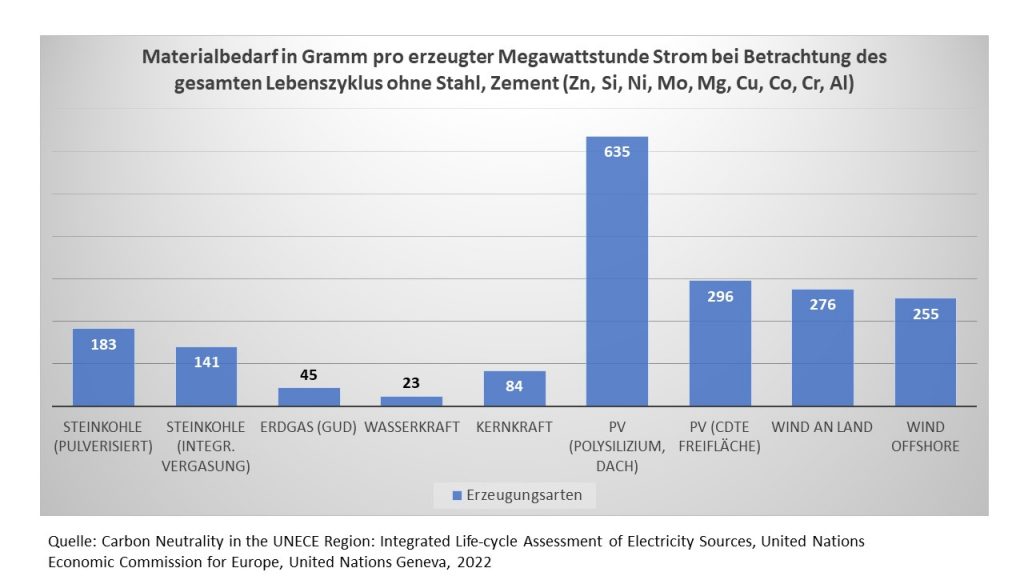
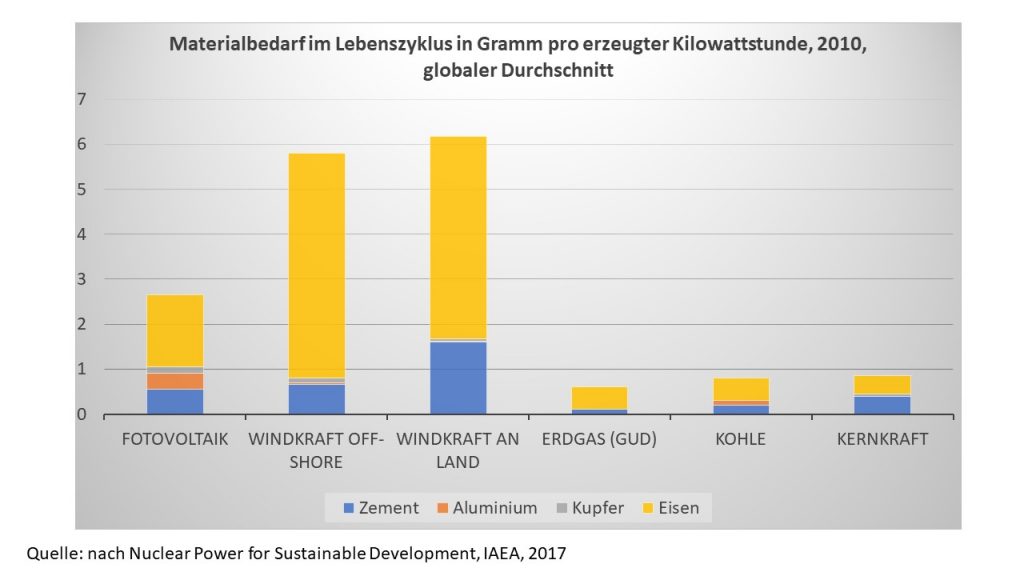
The resources required for the construction of generation plants based on renewable energies as well as on fossil fuels and nuclear energy also include fossil fuels, which must be used for the extraction and processing of the necessary raw materials, for steel production and for the construction and operation of the plants. Although nuclear power plants require the procurement of uranium fuel and its further processing in the nuclear fuel cycle in addition to the construction of the plants themselves, the high energy density of uranium means that nuclear power plants also have a convincing balance here. In the case of fossil-fuelled power plants, the use of fuel for electricity generation dominates.
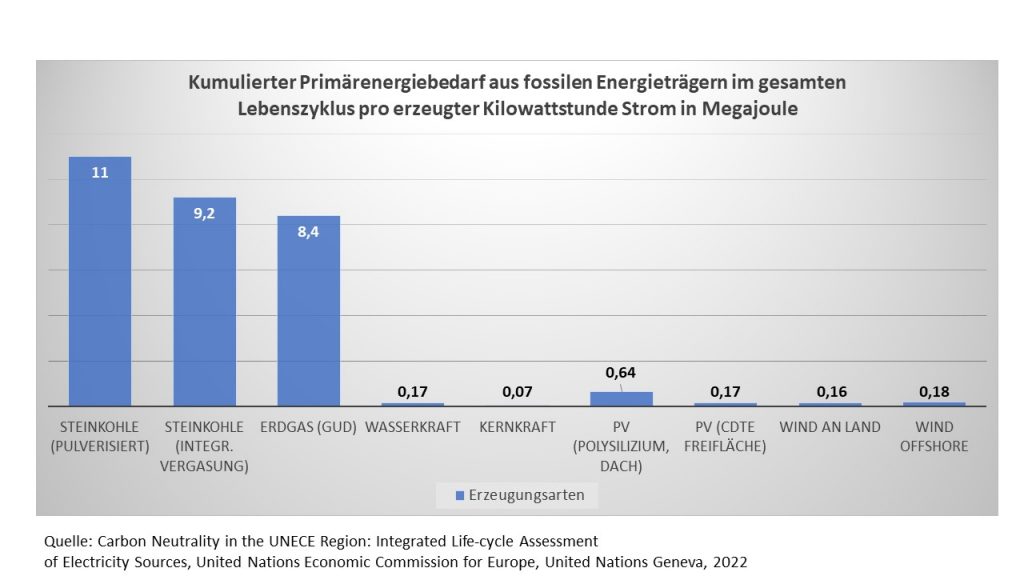
Nuclear power plants require much less land than wind power and photovoltaics and are therefore more compatible with the landscape, human quality of life and biodiversity than these renewable forms of generation. The impact of cooling water extraction on aquatic ecosystems is limited to an acceptable level by regulation and there are technical options for harmonising the requirements of these ecosystems with those of power plant operation (such as hybrid cooling towers), even under the condition of potentially rising temperatures in the long term.
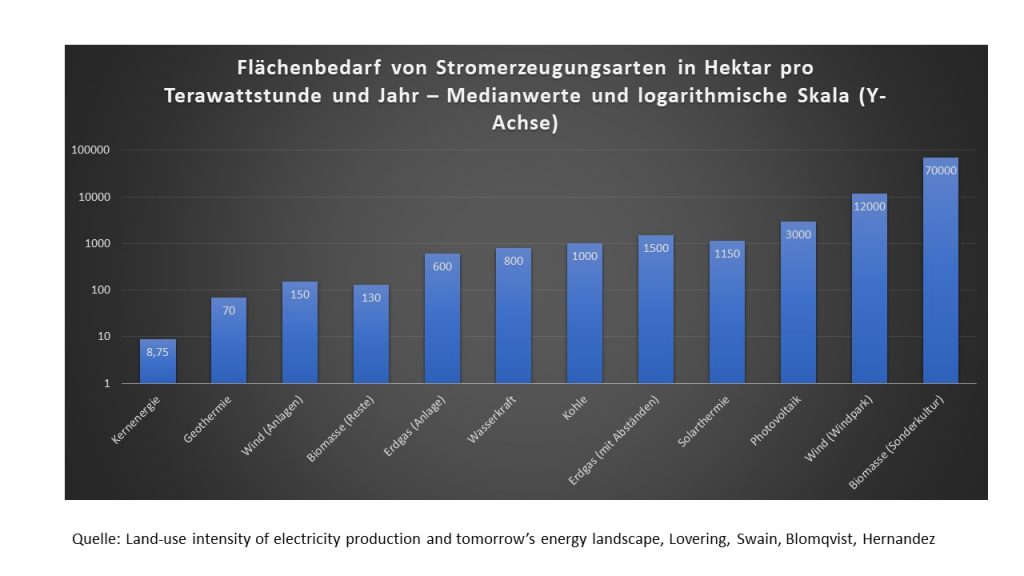
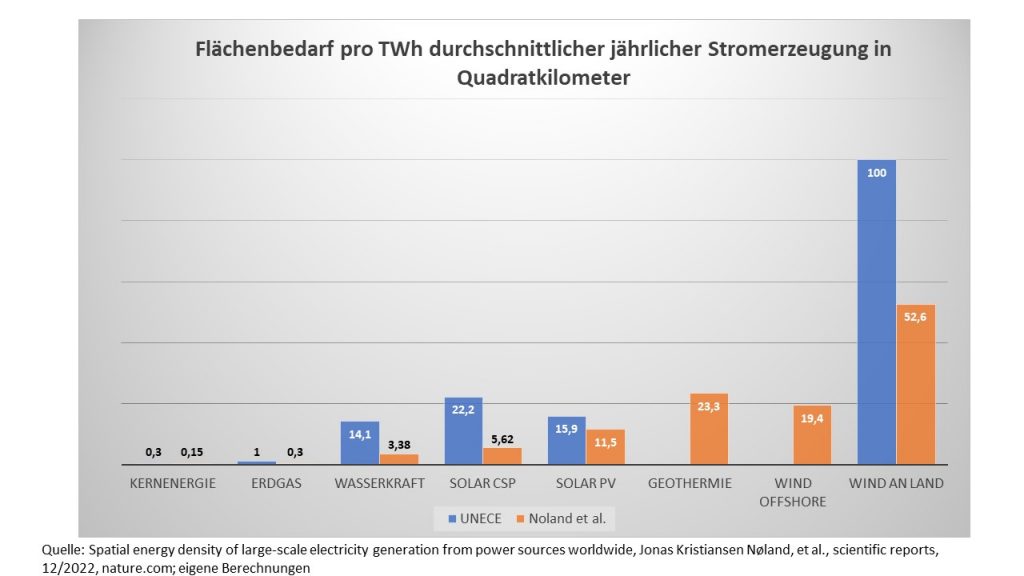
Nuclear power plants can be easily recycled within the scope of the capacity of the secondary raw material markets (restriction especially for construction waste) and their dismantling yields numerous valuable secondary raw materials. However, some parts and components (mass fraction of 1 - 2 %) are activated or substantially contaminated in the course of operation and must therefore be removed from the material cycle and biological cycles by final disposal.
Unlike fossil fuels, which are irretrievably destroyed when used to generate energy, some of the nuclear fuel can be recovered and recycled. Utilisable secondary resources are also created as part of the nuclear fuel supply. With future technologies, further utilisation of used nuclear fuel will become possible and, in particular, the use of the secondary resource from the fuel supply can become an enormous energy resource. In this respect, the possibilities of nuclear technology are far from exhausted.



